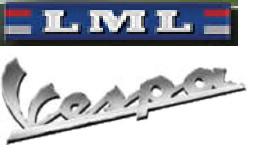Bajaj Auto announced that it was discontinuing the production of scooters. As quoted in a newspaper, the managing director reportedly said, “one day, God willing, we will be the largest motorcycle company in the world. If we have to be a motorcycle specialist, we have to make a sacrifice in the scooter segment—where we are not selling according to expectations.”
Consider the facts. According to Siam, Bajaj’s cumulative domestic scooter sales during April to November 2009 was 3,356 units, a decline from a similar period the previous year. The Indian scooter market, currently at 1.2 million, is growing at 15%. From 12% of two wheelers in 2008, scooters are expected to contribute 20% to two-wheeler sales in 2010. The scooter market has grown at double digits in the last fiscal compared to the motorcycle market, which grew only at 2.6%. Honda Motorcycle and Scooter India has just started a third assembly line at its plant to meet growing demand for scooters.
It would appear that the venerable Bajaj brand is falling into a classic trap of marketing myopia. Almost 50 years ago, the late Ted Levitt coined the term ‘marketing myopia’ for a firm or manager’s approach and thinking that is product-focused. He suggested that the reason railroad companies in the US declined in the early- and mid-20th century was that they thought they were in the railroad business—not the transportation business; they thought that customers were buying ‘railroad’ services from them—not the benefit of being transported from point A to point B in a convenient, inexpensive way. The railroads got into trouble not because the need for passenger and freight transportation declined. That grew. However, that need was filled by others (cars, trucks, airplanes, even telephones); it was not filled by the railroads themselves.
In a similar fashion, Hollywood barely escaped being totally ravished by television. Actually, all the established film companies went through drastic reorganisations. Some simply disappeared. All of them got into trouble not because TV’s inroads hurt but because of their own myopia. As with the railroads, Hollywood defined its business incorrectly. Studios thought they were in the movie business when they were actually in the entertainment business. ‘Movies’ implied a specific, limited product. This produced a fatuous contentment which from the beginning led producers to view TV as a threat. Hollywood scorned and rejected TV when it should have welcomed it as an opportunity—an opportunity to expand the entertainment business. TV grew into a bigger business than the old narrowly defined movie business ever was. Had Hollywood been customer-oriented (providing entertainment), rather than product-oriented (making movies), it would not have gone through the financial, market and emotional purgatory that it did.
In both railroads and Hollywood, the efforts focused on improving the efficiency of making the product and on making a better product—not really on understanding what the customer was looking for and in developing and executing a good product and marketing plan. Moreover, the firms in the industry defined their products in the narrowest possible terms—just as Bajaj Auto today appears to be defining itself as being in the motorcycle business and becoming a motorcycle specialist.
It would appear that Bajaj Auto is falling into a similar trap that railroad firms and Hollywood studios fell into in the early 20th century. Mahindra & Mahindra had launched two scooter models, Rodeo and Duro, in September 2009, which are reportedly selling at more than 7,000 scooters a month. And Bajaj Auto cannot sell even 200 scooters a month? Looks like one or more of the following is true. Someone there is simply not looking at the data from the market. Or the company or at least many influential people in the company think that it is in the motorcycle business.
Let us be very clear. Bajaj Auto is ‘not’ in the motorcycle business. Bajaj Auto (and Hero Honda, TVS, HMSI, Suzuki Motors, Hyundai etc) is actually in the business of providing commuting services to office goers; it is in the business of providing a thrill and ego boost to young males; it is in the business of providing (young) family transportation; it is in the business of providing stage and contract carriage; it is in the business of providing status and transportation to college going teenagers etc. The motorcycle simply happens to be one current form of a product that satisfies some of the above enumerated needs.
As an Indian, I am enormously proud of the fact that Bajaj Auto today has morphed into an Indian company that has some of the best two wheeler technology in the world, that it has developed on its own—its DTSi engines give more than any other comparable engines and are the best in the class. It is sad to see a company that has such a business-savvy lineage making marketing decisions that leave so much money on the table for competitors. At the very least, it appears that a company that was the leader in the market across segments is now on its way to confining itself to the higher-end segments—a sure shot way of becoming a niche player or of long-term decline.
The author is a professor at IIM, Ahmedabad. These are his personal views...

No comments:
Post a Comment